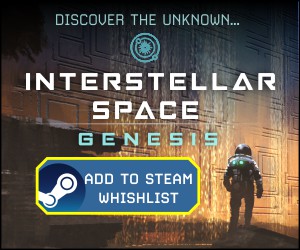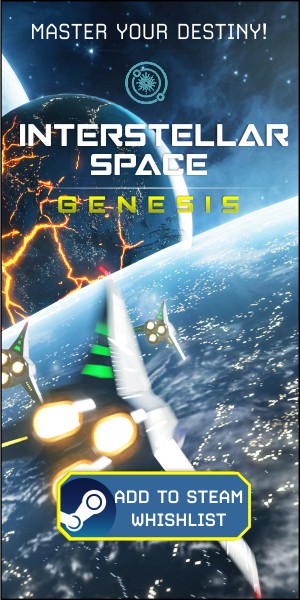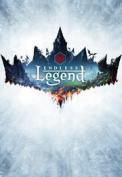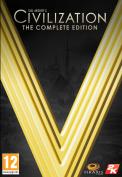In September 26th I wrote a post about a new space strategy game in the making called Aphelion: Phoenix Rising. You can read the post here: Aphelion Phoenix Rising: A new 4x Space Strategy Game under Development.
By then Brad Ottoson (main developer) told me that“[Aphelion] won’t be out for a few years still but we have a lot of it done”. Having liked what I saw and after having a nice chat with Brad I decided to invite Brad for an interview which he kindly accepted. Here is the interview we did. I hope you enjoy it as much as I have.
1. In Aphelion: Phoenix Rising (APR) website you introduce the game Races. To help people connect and know a bit more about APR could you make a small preview of the game background story?
Essentially most the races are interconnected in someway. We don’t want to say to much, otherwise we’ll be giving away the plot that will unfold during gameplay so we can tell you the basics. Essentially everything started with an event in the past in which a Brown dwarf (Solar system isn’t old enough for it to exist yet) appears out of now were and is in a collision course with Sol’s sun, roughly 100 years in the future from now. The collision will create a supernova when the Brown dwarf’s gravity sucks the hydrogen from the Sun and it explosively fuses all the hydrogen from the sun in one massive fusion reaction, destroying the solar system.
The governments of earth all band together to create 3 embryo ships to carry humanity elsewhere. These are named the Pinta, the Nina and the Santa Maria and bring with them storage devices, detailing all of earth technologies. Each ship takes off in different direction in hopes of finding a suitable planet to colonize using powerful sub light speed drives. The story continues, thousands of years in the future when an empire created from the survivors of the Pinta emerges. The Pinta arrived at it’s destination a few thousand years late, this was due to the fact that it sustained substantial damage to it’s engines from space debris, slowing it speed. The Pintar began to explore the galaxy and encounter 5 other distinct races. They encounter the Therans who are a peaceful aquatic race who are naive. As a result the Therans are easy marks at first to other races as they are caught unprepared to violence and greed that other exhibit. Also encountered are the Greys. They are an unique species with fragile bodies and massive intellect, but unfortunately for them they are rather irrational and unfocused in their thinking. The Pintar view the Greys with suspicion, because rumors have it that the Grey’s technology gives off readings similar to those that were detected when the Brown dwarf appeared in the past and it is felt they had some part in it. They also encounter the Vitruvians, who are a cybernetic race. This is not by choice though as in the past their race was infected by a complex and deadly infection that they named “the sickness”. “The sickness” bonded with their DNA and became part of them. As time progress the nature of “the sickness” mutated and began to create congenital problems their organs. As a result, they became experts at replacing vital organs with mechanical ones, prolonging their lives while a cure is created. Progress has been mixed and it is unknown if they will ever reverse the damage to become “pure” again, but they have been successful at creating treatments to slow the mutation of “the sickness”, prolonging the survival of their species.
The next two species encountered had an interconnected past. The subterranean Atton and the insect-like Atrox had fought on opposite sides in an ancient galaxy wide war in the past. The Atton were allied with the “Precursors” who they worshiped as gods. Both were losers in the battle when the Atton were beaten back and all but exterminated when their planet’s surface was vaporized in a massive nuclear holocaust. They continued by living underground for countless years until the lingering radiation on the planet’s surface dissipated. They Blame the Atrox for this apocalyptic event and vow vengeance. The Atrox were beat back in a series of massive battles till they were isolated on their home planet.
The “Precursors” in a stroke of tactical genius, altered the course of a planet in their solar system to create a never ending eclipse of the Atrox home world. This rapidly cooled the planet and froze the Atrox in an icy grave. This recently has been undone though, as a massive asteroid has struck the eclipsing planet and altered its course, thawing the Atrox and releasing them back upon the galaxy. Curiously the Atrox and the Atton share Some DNA and show signs of DNA manipulation within their genetics, the Atrox more so than the Atton. There is little record of the “Precursors” in historic documents after the sealing of the Atrox within their prison. It is thought that they left the galaxy to search out a new galaxy to start anew. The Atton await the return of their gods and focus their efforts and religion on reconnecting with them.
2. In the website you mention that the APR Races will have their “own individual tech tree, that is unique to them”. Does this mean that there will be different specific techs (different bonuses, requirements, special abilities) for each race or just a different combination (tech path) of the total number of techs available to all the races? You also mentioned that the tech trees are somewhat randomly generated in each game. Could you explain a bit more how it works?
Yes, all the technologies for each race are completely specific to that race and are not shared with any other race. These technologies reflect each race and give each a distinct feel. To give an example, the Atton are a faction that is controlled by an authoritarian government centered on their beliefs. Many of their “system” technologies revolve around religious decrees. In addition they are distinct as they are the only faction to lack any form of shielding for their spaceships. In contrast, the Vitruvians are a cybernetic race and much of their “system” technologies revolve around increasing society efficiency by joining their consciousness. Also the Vitruvians are quite reliant on shielding technologies to protect their ships, and are equipped with the minimal armor.
3. You also mention that players will be able to colonize planets according to their terraforming capabilities, and that will depend on the right level of terraforming technology. Does this mean that the player will be allowed to colonize every planet or does he/she need to unlock some specific techs first?
There will be a variety of different planets within our game much like there is in the real universe. These will range from Irradiated planets in a semi locked orbit such as Mercury is, to frozen wastelands such as Pluto. Obviously some planets such as these on the extreme ranges of the spectrum could not be terraformed regardless of technological knowhow. In our game we will have inhabitable planet classes such as Barren, Swamp, Oceanic, Arid, and Terrain. These planets will be colonizable without any further terraformation and will support population dependent on class and size. The Therans will receive an additional population bonus on Oceanic planets since they are an amphibious race and can thrive in water. Terraformable planets are either too hot to sustain any substantial amount of life such as desert planets, or conversely too cold such as Arctic and Arctic Desert planets. To colonize these planets, the player must first research specific technologies that allow them to terraform these planets. The technologies will be either “warming” technologies for the Arctic and Arctic desert planets or, “cooling” technologies for Desert planets. Each planet will have a specific level of technological difficulty to terraform. These are represented by “tick” marks and each planet can have up to 7 levels. Conversely each technology will allow the player to terraform a number of levels alone. These technologies can be combined together to terraform more difficult planets. An example would be if you had a desert planet with that needed four levels of terraforming. To terraform this planet you may have to combine a technology that cools a planet two levels with two additional technologies that cool a single level apiece. At this point the planet would slowly be terraformed over a certain number of turns depending on it’s size and technologies used, and will become one of the habitable planet types in the end. Technologies used to terraform cost resources in the form of alloy and Galactic credit’s. Not all technologies are equal and some are faster, or more resource efficient than others. As mentioned before, not all planets are terraformable. Irradiated, Frozen core, Volcanic and and Gas giant planets fall in this class of planets. This does not mean they are worthless since many structures that you build in you system are dependent on these classes of planets and could not be built otherwise.
4. You mentioned to me previously that APR is inspired by various 4x space strategy games like Master of Orion 2 and StarTrek: Birth of the Federation. Taking this into consideration in which aspects will APR innovate the genre and why should the fans be looking forward for APR?
Our original goal was to make a game very similar to Birth of the Federation with new graphics, since we were frustrated that no one had came out with a proper sequel. We then stood back and thought “what was great about this game” and “what did it not do that well”. What we thought was great was the layout for planets and the main exploration screen. BOTF’s planet management was nice in the fact that you managed systems as a whole instead of individual planets, this allowed you to manage many more planets then the typical per planet way. This allowed you the feeling of managing a massive empire without the headaches of actually having to manage every aspect of a massive empire. We felt one of the weaknesses of MOO2 was that you had to build the exact same structures on every planet of your system and couldn’t manage them as a whole.
What we did find that MOO2 did better than BOTF was primary their Tactical combat system. In Birth of the Federation, you built a fleet and then had them battle with an enemy fleet in a battle royal. Though options for tactical maneuvers existed, the most of the time the best tactics ended up being limited to charging in and firing all your weapons at opposing ships. This went against the core gameplay for a turn based strategy game. MOO2 on the other hand allowed the player to move each ship independently and to maneuver to present their least exposed side to the enemy while trying to focus firepower on one quadrant of the enemies. This was exceptionally strategic and plays the core gameplay that our fans enjoy. So we chose to have a style similar to MOO2 in that aspect with a top down view on a grid battle map where each ship in maneuvered individually.
We have innovated and expanded gameplay in many area’s within our game. As mentioned before, we have a unique method for players to terraform planets and research technology. We also like to give the players choices throughout the game, and many times throughout the tech tree the player will have to choose one technological branch over another. Players will not be able to research both branches in these instances. Another instance where we will infuse choice into the game is during events. These can be triggered many ways. Often the player will be given a situation where they must choose one action over another, and the outcomes are not set in place. Often what was determined to be the right choice in one game, brings an entirely different outcome in another game.
In addition we have added much to espionage within our game. Players will train spies and maintain a pool of them. To perform tasks, a player will choose an action and send a spy on a mission. After a certain number of turns this task will come to completion. For each mission there are a vast number of outcomes that can happen, such as the agent could successfully complete his mission and then succeed in implicating another faction in the deed. This would lower that player’s trust rating and cause the friendliness rating between the 2 factions to fall. On the opposite end of the spectrum, your agent could fail and become captured and turned into a double agent. If this happens, you will be notified that your agent failed at his mission and has returned. Any operations following this action will be severely compromised until your spy agency uncovers that there is a traitor. In addition, if your moral is faltering, you can send agents to perform operations to silence critics within your empire, raising morale. Nothing is without consequences though, and these operations could fail and backfire.
One area which we felt was often neglected within our genre that we wish to improve on, is ground combat. In APR, we decided we wanted to implement an engaging, yet brief ground combat system. We did this because we wanted to add more depth to the game, yet we didn’t want to drag the game to a crawl by adding a long in depth battle system which would force other player to wait, while other completed. Our combat system will be engaging and entertaining and the outcome will not be completely predetermined, leaving some suspense. Mostly this will be based on each player’s choices prior to combat. It will also take into account, technologies researched, building built and population for the defending side and numbers of transports used by the attacking side. To help the story line progress, many random events will occur throughout that will uncover portions of the past to give back story. In addition, while exploring the galaxy, players will uncover artifacts on planets that will give bonuses and back story as well. As the galaxy is essentially completely explored by mid game, we devised a way to extend this exploration portion by allowing players to form expeditions to explore inhospitable planets in search of artifacts and secret laboratories. To do this, players must research specific technologies that will enable exploration parties for specific planet types. An example of this would be ultra high pressure exploration vessels for gas giant exploration.
APR is built on what we feel are the strong points of our favorite games, but it has grown to be unique on it’s own, with far to many innovations to list. What I have listed above are just a few of things that players can look forward to.
5. Will APR provide multiplayer capabilities? Hot-seat, LAN support?
APR can be played over the internet with any extra seats being controlled by AIs. Players on a LAN can play, though LAN players will have to connect to the matchmaking server though the internet to start the game. There will not be a hotseat mode in the game.
6. When do you plan to release a playable demo?
We haven’t decided to release a playable demo yet. We’re still weighing the pros and cons of doing so, such as the time required to produce it vs the increased interest it could generate.
7. For which platforms are you planning to release for? Will this include Mac?
The platforms we initially release on will most likely depend on our publishing arrangement when the game is complete. The game source code is occasionally compiled and run on a computer running Linux, and we expect there won’t be many problems getting it to run on Macs.
8. And by mentioning APR release. In September 2009 you mention to me that APR “won’t be out for a few years still but we have a lot of it done”. In the site’s forum, in a 2006 post you mention 2011 as the release date. Is this still the target for APR release?
Much depends on if we receive outside funding through a publisher or other outside source. While this would certainly speed up APR’s development, we are unwilling to sign a publishing deal just for the sake of getting funding. If we must continue to finish the game on our own it may take longer than we anticipated, but we are willing take do this route if needed. Everyday brings us closer to completion and progress has been steady. So far we have not gotten any bids on Jared’s left kidney, but we are still hopeful.
Thank you for your time Brad.
Thanks.

Related Articles:
- Innovative Tech Trees in Space Strategy Games
- Sins of a Solar Empire: Rebellion DLC “Forbidden Worlds”
- Aphelion Phoenix Rising: A new 4x Space Strategy Game under Development
- Master of Orion: Conquer the Stars Announced
- Interview: Round 2 with Novacore on Legends of Pegasus






